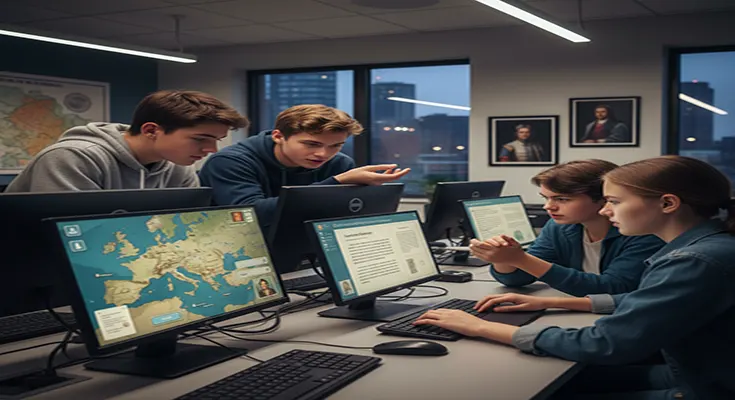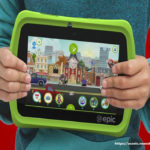History class in high school has long relied on textbooks and lectures. However, in the digital age, a new, powerful tool is transforming the way students connect with the past: interactive online games. These “serious games” and gamified activities don’t just review facts; they immerse students in historical settings, foster critical thinking, and significantly boost engagement and learning outcomes.
Here is a comprehensive guide on how to use interactive online games for high school history class effectively, moving beyond passive learning to active historical exploration.
1. Identify Your Learning Objective First
The most crucial step in integrating games is alignment. A game should serve your curriculum, not distract from it.
- Content Alignment: Choose games that directly relate to your current unit. For instance, if you are studying the American Revolution, use a game that forces students to take on the perspective of a colonist or a Loyalist.
- Skill-Based Objectives: Identify the skills you want to develop. Are you focusing on timeline sequencing, causality and effect, perspective-taking, or source analysis? Many games are excellent for developing problem-solving and strategic thinking within a historical context.
2. Choose the Right Type of Game for the Task
Interactive games come in several forms, each best suited for different pedagogical goals:
| Game Type | Description & Purpose | Examples & Use Cases |
| Immersive Simulations | Puts students into the shoes of a historical figure or a group. Emphasizes perspective-taking, decision-making, and understanding complex socio-economic factors. | Mission US (interactive narratives covering topics like the American Revolution and the Great Depression), Discovery Tour (non-violent, museum-like explorations of historical environments like Ancient Egypt or Greece). |
| Gamified Quizzing/Trivia | Fast-paced, competitive, and excellent for rapid-fire review, fact recall, and date memorization. Provides immediate feedback. | Kahoot!, Quizizz, Walk the Plank games focusing on specific periods or figures. |
| Historical Strategy | Requires students to manage resources, make long-term political or military decisions, and understand the consequences of their choices on a grand scale. | Civilization (for macro-level understanding of culture and development), specific online Timeline Games or State History Raters that require comparative analysis. |
| Digital Escape Rooms | Promotes collaborative critical thinking and primary source analysis. Students solve historical puzzles and ciphers to “escape” a scenario. | Teacher-created Google Slides Escape Rooms focused on constitutional principles or key historical figures (e.g., Susan B. Anthony). |
3. Implement the “Game-Discuss-Analyze” Framework
Simply letting students play is a missed opportunity. To truly leverage the educational power of games, follow a structured process:
A. Pre-Game: Setting the Context
- Provide Context: Introduce the historical background and the specific challenges of the time period the game is set in.
- Define Goals: Clearly articulate the academic objectives. “Today, you are playing to understand the conflicting motivations of colonists during the Boston Tea Party, not just to win the game.”
B. During Game: Facilitation and Guidance
- Observe and Guide: Circulate the classroom. Instead of giving answers, ask open-ended questions like, “Why did you choose that diplomatic option?” or “How did that economic decision impact your people?”
- Encourage Collaboration: For complex games, encourage students to work in teams, fostering communication and shared problem-solving skills.
C. Post-Game: Discussion and Inquiry
- Historical Accuracy Debate: This is the most critical step. Discuss what the game got right and what it simplified, distorted, or omitted. Did the mechanics distract from the historical reality? Did it present a singular perspective?
- “What If” Scenarios: Use the game’s mechanics to jumpstart deeper inquiry. “If you had chosen to support the opposing side, how would your character’s life have changed?” This encourages students to analyze the complex causality of history.
- Written Reflection: Assign a follow-up journal entry or essay comparing the game’s portrayal of history to what they read in their textbook or primary sources.
4. Maximizing Engagement and Skill Development
Digital games offer unique benefits that traditional methods often cannot match:
- Active Learning & Retention: Research shows that active learning, where students are exploring, problem-solving, and making mistakes, dramatically improves retention. The immediate feedback loop in games allows students to correct misunderstandings in real-time.
- Multiple Perspectives: Games often allow students to view events from the angle of the “other side”—be it a different social class, nation, or political faction—shifting the focus away from a single, dominant narrative.
- Digital Literacy: High school students become more comfortable with digital tools, an essential skill for the modern world, while developing advanced analytical thinking needed to discern the historical truth within a gamified context.
Conclusion: History in the Hands of the Learner
Interactive online games are not a replacement for the traditional history teacher, but a powerful supplementary tool. By carefully selecting games that align with curriculum standards and by using a structured approach that centers on post-game critical discussion, educators can transform history from a collection of dry facts into an immersive, analytical, and deeply engaging journey of exploration. The power to “relive” history is now in the students’ hands—and that engagement is the first step toward genuine understanding.











